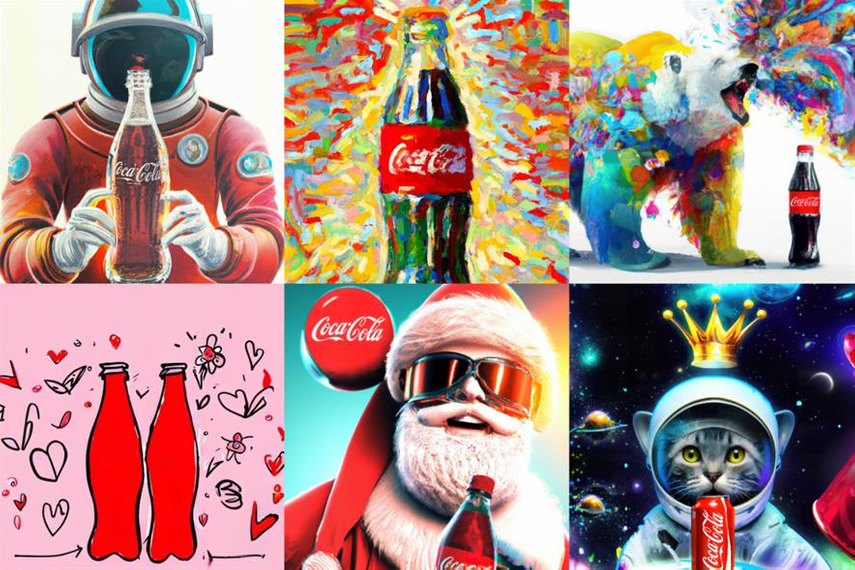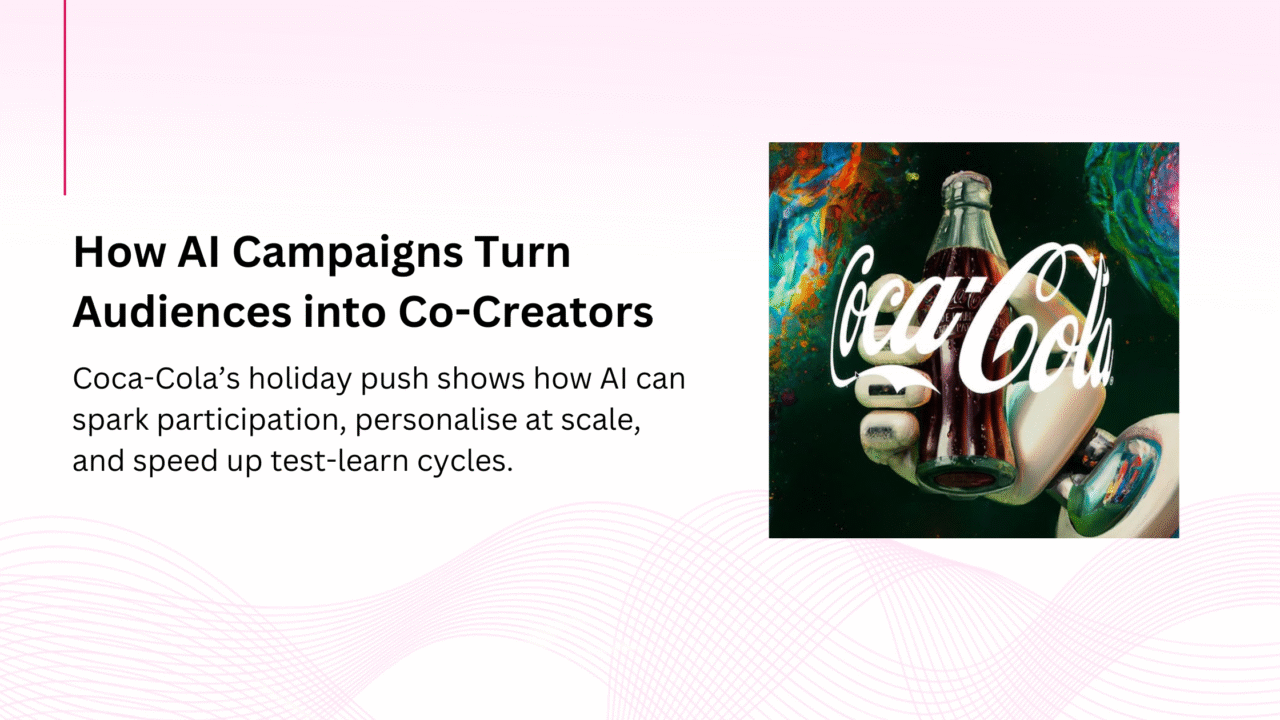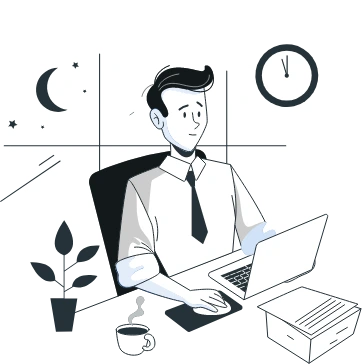The rise of AI-powered marketing campaigns is no longer a distant concept — it’s happening now. The future of advertising has arrived, and it’s leading the way. After sharing why brands are making the switch to AI-assisted digital marketing, it’s clear that global leaders are already proving the power of AI in action. The most recent example? Coca-Cola’s 2025 holiday campaign, which lets fans co-create festive art using generative AI — turning creativity into a two-way experience between brand and audience. Coca-Cola has shown the world what happens when creativity meets intelligence.
Their new holiday campaign lets people co-create festive art using generative AI, turning memories into personalised Coke-themed visuals. Thousands of users joined within days — proof that when brands invite audiences to play, they don’t just watch ads, they become part of them.

1. Coca-Cola’s Holiday Campaign: Creativity Meets AI
Coca-Cola’s new initiative invites users to generate customised digital artwork through its Create Real Magic platform, blending human creativity with AI tools. Participants can combine classic Coke imagery with their own festive memories, producing unique visual stories to share online.
This isn’t Coca-Cola’s first AI experiment — the brand previously launched Create Real Magic in collaboration with OpenAI, showing how AI can drive mass participation and emotional storytelling. Each AI-generated creation reinforces brand connection and delivers measurable engagement at scale. The platform merges human imagination with OpenAI’s DALL-E and GPT technology. Fans combine nostalgic elements like Santa, polar bears, and the Coke ribbon to craft their own artwork — each piece instantly shareable on social media.
The result? Over 120,000 user-generated creations within weeks, a 60% rise in engagement across platforms, and a surge in emotional connection. The campaign proved that AI can make marketing participatory — not just persuasive.
2. The Domino Effect: How Other Brands Followed
Coca-Cola’s success sent ripples across industries:
- Nike used AI to design personalised running routes based on user data from its fitness app result: higher repeat engagement.
- Nestlé reimagined its classic Milkybar ads through generative AI, connecting nostalgia with Gen-Z humour.
- L’Oréal created a virtual makeup try-on system powered by AI, turning product discovery into play.
- Even BMW used AI to generate adaptive visuals for outdoor billboards that changed based on the weather.
These examples show that brands aren’t just adopting AI; they’re reshaping creativity for relevance. The shift is measurable — faster content cycles, stronger emotional recall, and lower cost to acquire customers. For search-led use cases, see how AI alters discovery in our take on Google AI Overviews and SEO, then map that thinking back into your creative strategy.
3. Why AI Campaigns Work Better Than Traditional Ones
AI-powered marketing campaigns succeed because they blend prediction with personalisation. Instead of running one-size-fits-all ads, AI analyses behaviour, mood, and context to deliver messages that feel custom-made.
At Cosnet Global, we use the same principle — integrating AI tools that help businesses forecast trends, test hundreds of ad variations, and refine creative direction automatically. It’s not magic; it’s mathematics with empathy.
For brands that want to understand the system behind it, our AI Marketing Operating System blog breaks down how data and human creativity align to create campaigns that learn, adapt, and outperform.
4. What Coca-Cola’s Campaign Teaches Every Brand
Three takeaways stand out from Coca-Cola’s AI leap:
- Participation beats promotion. Letting users co-create content builds community faster than any hashtag.
- AI needs direction, not control. The strongest campaigns still start with human insight and emotion.
- Data is the new creativity. Every generated artwork tells marketers what colours, themes, and tones emotionally resonate with their audience.
The campaign transformed passive viewers into active storytellers, proving that AI doesn’t replace the marketer — it amplifies their creative bandwidth.
5. Turning Inspiration into Action
AI isn’t just for billion-dollar brands. Smaller businesses can use the same mindset: mix automation with authenticity, data with design, and storytelling with smart tools. From predictive ad targeting to automated content scaling, AI brings speed, precision, and creative depth to every campaign.
“Spark → Scale → Safeguard” framework
- Spark (ideation): Use AI to generate 50–100 creative directions from a tight brief, then shortlist with human review; result: faster concept discovery.
- Scale (testing): Auto-version headlines, visuals and CTAs into market and let models route budget to winners; result: lower CPC/CPA.
- Safeguard (brand & legal): Apply prompt rules, content filters and human QA before publishing; result: on-brand outputs without surprises.
If your brand wants to build the next great story that learns while it sells, start by exploring our digital marketing services — where creativity and computation meet.
Let’s make marketing feel like magic again. Talk to us today about crafting your own AI-powered success story.
5 FAQs
1) What exactly is an AI-powered marketing campaign?
It’s a campaign where AI helps generate, personalise, and optimise creative and media in real time. You still start with a human brief—audience, message, guardrails—but AI explores many creative variations quickly. The team then reviews outputs, cuts what’s off-brand, and ships the best versions. As results roll in, the system reallocates spend and iterates. Net effect: faster testing, tighter targeting, and better unit economics.
2) How would a mid-market brand measure success without guesswork?
Pick a small set of leading and lagging KPIs. Leading: save/share rate, scroll-stop rate, time-on-page, variant win-rate. Lagging: CPA, ROAS, assisted conversions, subscriber growth. Run control vs. AI-assisted treatments for two weeks minimum, then scale winners. The aim is not just cheap clicks—it’s compounding creative learnings you can reuse.
3) Do AI campaigns replace creative teams?
No. They shift the team’s focus. Humans set the strategy, tone, and taste; AI proposes variations and speeds up production. Think of it as a creative exoskeleton: you move faster and lift more, but direction and judgement remain human. The best results come from human-in-the-loop workflows with clear brand rules.
4) What about brand safety and legal/IP?
Set prompt rules, banned terms, and visual do’s/don’ts before any generation. Use human QA to review outputs, and log what’s approved. Clarify asset ownership in your T&Cs when users co-create (e.g., licensed to the brand for marketing use). Keep an audit trail of prompts, models, and approvals—this protects you if questions arise later.
5) How much budget and time do we really need for a pilot?
A pragmatic 30-day pilot can run on a modest test budget split across two channels. Week 1: brief, guardrails, and creative system. Week 2: generate and shortlist; prep variants. Week 3: live A/B tests with event tracking. Week 4: scale winners, document prompts/templates, and lock a reusable playbook. Expect quicker learning curves and lower cost per qualified action versus traditional-only workflows.

